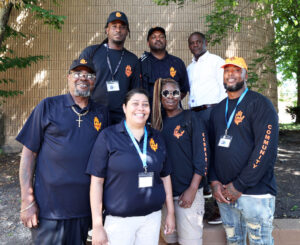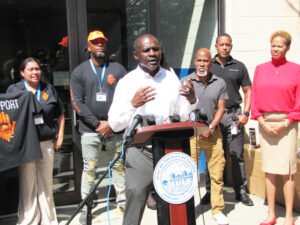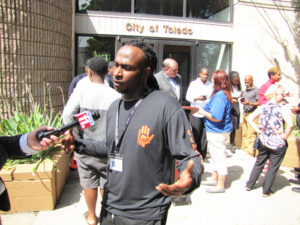
The Truth Staff
The City of Toledo’s Violence Interrupters program is ready to take the next step in an effort to tamp down the incidents of violent crime in the city’s neighborhoods. After focusing their efforts in the Junction and Englewood neighborhoods over the past year, the city has brought on three more violence interrupters to work in the Lagrange area.
“It has been a summer that has demonstrated improvement,” said Mayor Wade Kapszukiewicz at the start of a press conference last week at Zablocki Center on Lagrange Street.
“All over the country we have seen how the pandemic has increased violence,” he continued. “We can be proud we have started to turn the corner on gun violence … but we are not satisfied with a problem as severe as this one.”
The mayor noted that homicides in 2022 are down 25 percent from the previous year and crime in general has decreased. He attributed the improved numbers to three factors: youth programming; improved police programs and the violence interrupters.

With 35 homicides thus far, the city is on pace to fall far short of the total of 75 homicides recorded in 2022 – an all-time high.
“It’s not just about gun violence,” said Toledo City Councilwoman Vanice Williams, in whose district the Lagrange area falls. “It’s about our community. [Violence] is a symptom of different ills within the community … they [violence interrupters] are here to interrupt everything that keeps our community from being safe and we are working to fix the ills in our community.”
David Bush, the City’s Save Our City commissioner who directs the program and reports to Safety Director Brian Byrd, introduced the three newly appointed Violence Interrupters who will be focusing their attention on the Lagrange community. They are Elizabeth Harris, Christopher McIntyre and Christopher Matthews.
“One of the reasons we are seeing success is that the program is going out to the community as anticipated.
Bush was hired in May to replace the original director, JoJuan Armour, who resigned his position after a little more than a year on the job.

The program is modelled after the Cure Violence strategy developed by Dr. Gary Slutkin, a physician at the University of Illinois in Chicago. The theory is to treat widespread gun violence like a public health crisis by identifying community members most at risk of spreading violence and then treating their behaviors.
The focus has primarily been on helping residents find employment, building credit and defusing hostilities. For example, the violence interrupters reach out to the families of shooting within three days in order to help with needs and to resolve disputes that might led to retaliation.
